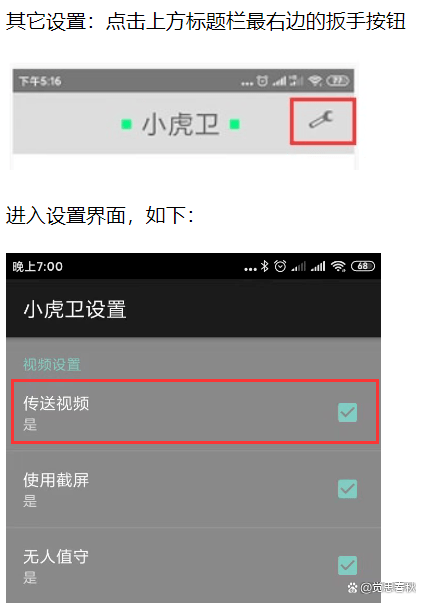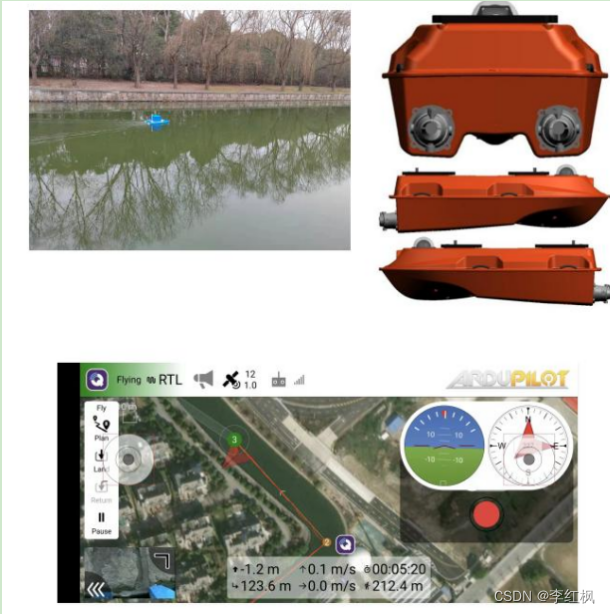后起飞无人机
1、Jetson连接飞控
vehicle = connect('/dev/ttyACM0', wait_ready=True, baud=921600)串口连接,波频是921600
2、socket网络通信
s=socket.socket(socket.AF_INET,socket.SOCK_DGRAM)
s.bind(("192.168.1.102",8080)) #绑定服务器的ip和端口
print("connect ...... ..... .... ")
print("connect ...... ..... .... ")
print("connect ...... ..... .... ")Socket通信原理:
负责进程之间的网络数据传输,好比数据的搬运工。
服务器端先初始化Socket,然后与端口绑定(bind),对端口进行监听(listen),调用accept阻塞,等待客户端连接。在这时如果有个客户端初始化一个Socket,然后连接服务器(connect),如果连接成功,这时客户端与服务器端的连接就建立了。客户端发送数据请求,服务器端接收请求并处理请求,然后把回应数据发送给客户端,客户端读取数据,最后关闭连接,一次交互结束。
类似于打电话:
A给B打电话,拨号等待接听,B接听,OK开始通信
它是网络通信过程中端点的抽象表示,包含进行网络通信必须的五种信息:
-
连接使用的协议
-
本地主机的IP地址
-
本地进程的协议端口
-
远地主机的IP地址
-
远地进程的协议端口
套接字(服务器):
在任何类型的通信开始之前,网络应用程序都必须创建套接字。
有两种类型的套接字:基于文件的和面向网络的。
基于文件AF_UNIX
面向网络的AF_INET
套接字地址(IP口端):主机-端口对
做个比喻,套接字就像一个电话插孔,主机名和端口号就像区号和号码。
当程序之间需要通信时,需要知道对端的主机名(IP)和端口号。
-
面向连接的套接字
TCP套接字的名字SOCK_STREAM
- 无连接的套接字
UDP套接字的名字SOCK_DGRAM
3、多线程和多进程
re = threading.Thread(target=re_message) #创建一个接收信息的进程
re.start()
se = threading.Thread(target=send_message) #创建一个发送信息的进程
se.start()Python 实现多线程编程需要借助于 threading 模块
threading 模块中最核心的内容是 Thread 这个类。
我们要创建 Thread 对象,然后让它们运行,每个 Thread 对象代表一个线程,在每个线程中我们可以让程序处理不同的任务,这就是多线程编程。
-
接受另一无人机信息
def re_message():global opponent_highwhile 1:time.sleep(1) #每一秒发一次#client是通过 sk.recv(1024)来进行接受数据,而1024表示,最多每次接受1024字节data=s.recv(1024) postion=data.decode("utf8",'ignore') #解码忽略错误提示b=postion.split(' ') #把传输信息分离opponent_high=float(b[0])opponent_gps=b[1]opponent_velocity=b[2]print ("Opponent vehicle height: %s" % opponent_high)print ("Opponent vehicle GPS: %s" % opponent_gps)print ("Opponent vehicle velocity: %s" % opponent_velocity)-
飞控发送给Jetson信息
def send_message(): #发送给Jetson的信息while 1:time.sleep(1)print (" Battery: %s" % vehicle.battery)alt=vehicle.location.global_relative_frame.altprint("This vehicle height: %s" % alt)global_frame=vehicle.location.global_frameprint("This vehicle GPS: %s" % global_frame)velocity=vehicle.velocityprint("This vehicle velocity: %s" % velocity)data=str(alt) + " " + str(global_frame) + " " + str(velocity)s.sendto(data.encode(),("192.168.1.101",8080)) #飞控编码发给Jetson4、飞行协同逻辑
arm_and_takeoff(10)
while 1:if opponent_high > 8 :arm_and_takeoff(10)if vehicle.location.global_relative_frame.alt > 8 :if opponent_high < 4 :vehicle.mode = VehicleMode("LAND")while vehicle.mode != 'LAND':print("Waiting for drone to enter LAND mode")time.sleep(1)print("Vehicle in LAND mode")
def arm_and_takeoff(targetHeight):while vehicle.is_armable!=True:print("Waiting for vehicle to become aramable")time.sleep(1)print("Vehicle is now armable")vehicle.mode = VehicleMode("GUIDED")while vehicle.mode!="GUIDED":print("Waiting for drone to enter GUIDED flight mode")time.sleep(1)print("Vehicle now in GUIDED MODE. Have fun!!")vehicle.armed = True
# while vehicle.armed==False:
# print("Waiting for drone to become armed")time.sleep(3)
# print("Look out! Virtual props are spinning!")vehicle.simple_takeoff(targetHeight) ##meterswhile True:print("Current Altitude:", vehicle.location.global_relative_frame.alt)if vehicle.location.global_relative_frame.alt>=.95*targetHeight:breaktime.sleep(1)print("Target altitude reached!!")return Nonedef get_distance_meters(targetLocation, currentLocation):dLat = targetLocation.lat - currentLocation.latdLon = targetLocation.lon - currentLocation.lonreturn math.sqrt((dLon*dLon)+(dLat*dLat))*1.113195e5def goto(targetLocation):distanceToTargetLocation = get_distance_meters(targetLocation, vehicle.location.global_relative_frame)
#vehicle.location.global_relative_frame.alt为相对于home点的高度
# simple_goto函数将位置发送给无人机,生成一个目标航点 vehicle.simple_goto(targetLocation)while vehicle.mode.name == "GUIDED":currentDistance = get_distance_meters(targetLocation,vehicle.location.global_relative_frame)if currentDistance < distanceToTargetLocation*.01:print("Reached target waypoint")time.sleep(2)breaktime.sleep(1)return None





